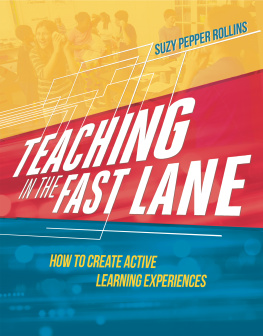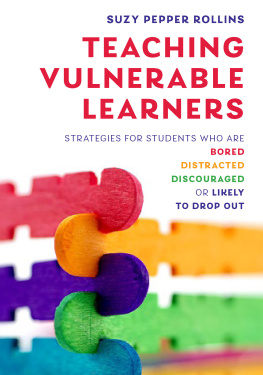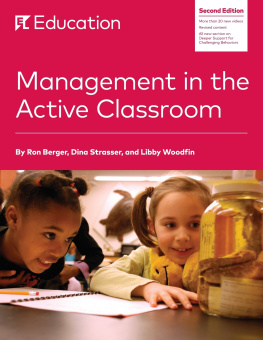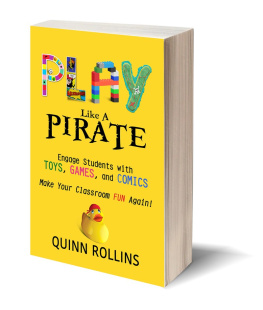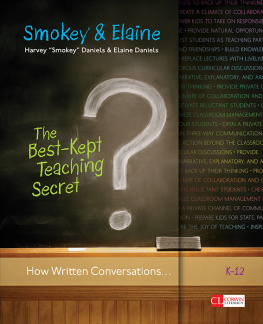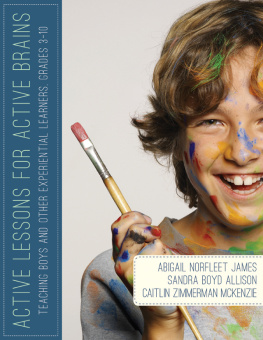Suzy Pepper Rollins - Teaching in the Fast Lane: How to Create Active Learning Experiences
Here you can read online Suzy Pepper Rollins - Teaching in the Fast Lane: How to Create Active Learning Experiences full text of the book (entire story) in english for free. Download pdf and epub, get meaning, cover and reviews about this ebook. year: 2017, publisher: ASCD, genre: Religion. Description of the work, (preface) as well as reviews are available. Best literature library LitArk.com created for fans of good reading and offers a wide selection of genres:
Romance novel
Science fiction
Adventure
Detective
Science
History
Home and family
Prose
Art
Politics
Computer
Non-fiction
Religion
Business
Children
Humor
Choose a favorite category and find really read worthwhile books. Enjoy immersion in the world of imagination, feel the emotions of the characters or learn something new for yourself, make an fascinating discovery.
- Book:Teaching in the Fast Lane: How to Create Active Learning Experiences
- Author:
- Publisher:ASCD
- Genre:
- Year:2017
- Rating:5 / 5
- Favourites:Add to favourites
- Your mark:
- 100
- 1
- 2
- 3
- 4
- 5
Teaching in the Fast Lane: How to Create Active Learning Experiences: summary, description and annotation
We offer to read an annotation, description, summary or preface (depends on what the author of the book "Teaching in the Fast Lane: How to Create Active Learning Experiences" wrote himself). If you haven't found the necessary information about the book — write in the comments, we will try to find it.
Teaching in the Fast Lane: How to Create Active Learning Experiences — read online for free the complete book (whole text) full work
Below is the text of the book, divided by pages. System saving the place of the last page read, allows you to conveniently read the book "Teaching in the Fast Lane: How to Create Active Learning Experiences" online for free, without having to search again every time where you left off. Put a bookmark, and you can go to the page where you finished reading at any time.
Font size:
Interval:
Bookmark:


....................
For Bailey, the most impressive woman I know. And her daughter Linder, who's just getting started.
....................
I'm not sure if it takes a village to write a book, but it sure takes a husband who will feed the cats when you're gone. Thank you, Scott, for waiting up for me when I told you to go to bed. Seeing the porch light on and having you insist on helping me with my bags that I've already carried a thousand miles makes all the difference. Thanks, Tim, for always handling everything else so that I can do the work that I love.
Thank you, ASCD, for being just fabulous, especially Carol Collins and Liz Wegner. You made the book so much better.
I mist up in the presence of great teaching. I'm fortunate that I get to witness so many talented teachers. If the world could see inside your rooms, everyone would know how many great things are happening in education. Thanks for welcoming me into your classrooms and being so receptive during trainings. I hope the strategies in this book further your instructional work.
....................
Anyone who has been in education for a long time has encountered a plethora of perspectives and philosophies about instructional practices from leaders, presenters, and colleagues. One fall, a new principal arrived at our building. Our test scores were, well, pretty dismal. And while no one specifically connected the dots for us, a new person was now in our former leader's office. His early pronouncement, which he later recanted, was the following:
Teachers are not allowed to sit down.
In his defense, our school had challenges. It was a high-poverty school with high absenteeism, transience, and other issues. And teachers certainly needed to be up monitoring and checking on their pupils, which is probably what he meant. I have never been a principal, so I can only imagine the pressures they are under to meet expectations from their supervisors and to ensure an orderly school environment.
But when the research is examined about the benefits of students doing more of the active learning than their teachers, expending more energy during learning experiences, and talking and moving more than their teachers, the following guidance would have been more in line with research:
Students should be the most active members of the classroom.
It took me years to realize the depth of importance in that proclamation. My first year of teaching was marked by covering up my own insecurities and deficiencies. I held an iron grip on my 9th graders, tolerated no dissent from students, and was mistakenly commended by leaders for my classroom being so incredibly quiet. My strategy only worked because our students were quite compliant. What no one knew is that I had nightmares about losing control of my students. I worried about losing my hard-earned job if administrators thought I didn't have things together. Fortunately, one of the most amazing teachers I've ever encountered just happened to be right next door. I watched, listened, practiced, and learned.
My next position was in one of the poorest middle schools in the country. A teacher was leaving in the middle of the year, and I had one day to transition with her. There was no semblance of protocols remaining in her classroom. Her eyes were swollen with tears. Shaken by what I had witnessed, my old control fears returned. I began my first day by posting more edicts than any student could remember or follow. I was determined that these 6th graders would not get the best of me. Right out of the gate, I was going to send the message that this was my classroom now. As I began reading these edicts one by one, a sea of blank faces stared back. A stark realization came over me. Only a handful of my new students understood enough English to comprehend much of my decrees thankfully. They were starting over with a new teacher. I was starting over with my new pupils. I erased the board and began anew.
This book is about strategically letting go of some of the best parts of the learning so that students reach their learning targets, achieve more, are motivated to work, learn to collaborate, and develop a sense of accomplishment. It's about our students getting in the fast lane of learning so that they are more rigorously productive.
The first chapter is the whythe benefits for students when they, rather than the teachers, are the most active ones in the classroom. Tragically, if the research is to be believed, most students' days are spent sitting at desks listening. Human beings of any age are not very good at that. Learners tend to achieve more and remember concepts better when they can engage in hands-on, collaborative learning. And employers are not seeking students who are good at sitting and just listening, anyway. Instead, organizations today are seeking applicants who are problem solvers, leaders, communicators, and decision makers and can work well in teams. Those skills are better practiced and nurtured in an active classroom.
A myth of the student-centered, active classroom is that it lacks structure. Students need structure and predictability in what is going to occur in the classroom. In fact, one can argue that having effective learning structures in place is even more important in the active classroom than in the teacher delivery mode because students will be moving, working in teams, and collaborating. One theme of this book is the importance of a lesson framework that balances student autonomy and classroom structure. An overarching question in this and other sections is "What content needs to be directly taught, and what can students learn on their own?" Chapter 3 provides some thoughts on rethinking lesson frameworks to ensure that each lesson component has a purposeful, distinct mission. A conversation to have during this portion of the reading is, Are current lesson planning templates encouraging active learning or inadvertently limiting teacher (and student) creativity?
The center of the book is the "how" of getting students to do more of the thinking and working. These are next-day implementable strategies coupled with the research behind them. The wonderful world of sorting offers hands-on, thought-provoking ways to get every student authentically engaged. Station teaching, cooperative learning, and menus provide students with more responsibility for their learning. A common element in this section is increasing student autonomy and internal motivation to work hard. These middle chapters provide explicit strategies that will move students to authentically participate.
The active classroom is not about teachers working less than students or vice versa both sides work hard. But the work looks different. It's more about creating learning experiences differently so that students engage in exploration of the content themselves. It's about students reaching explicit targets in different ways. Within the lesson framework, there is variety, which encourages curiosity and memory. And while there are many times that teacher delivery is essential for parts of the content, teachers also let go, giving learners more control and some decision making over their own learning. The results can be getting more student effort and a higher quality of work.
Chapter 1
....................
Standards. Pacing guides. Textbooks the size of an 11-year-old. High-stakes tests. Changing teacher evaluation tools. A tremendous amount of responsibility and accountability rests on educators' shoulders. The weight and pace of the curriculum loom. All of those learning targets and so little timehow can all of this content in teachers' brains and resources be successfully transmitted to students' heads?
Font size:
Interval:
Bookmark:
Similar books «Teaching in the Fast Lane: How to Create Active Learning Experiences»
Look at similar books to Teaching in the Fast Lane: How to Create Active Learning Experiences. We have selected literature similar in name and meaning in the hope of providing readers with more options to find new, interesting, not yet read works.
Discussion, reviews of the book Teaching in the Fast Lane: How to Create Active Learning Experiences and just readers' own opinions. Leave your comments, write what you think about the work, its meaning or the main characters. Specify what exactly you liked and what you didn't like, and why you think so.

